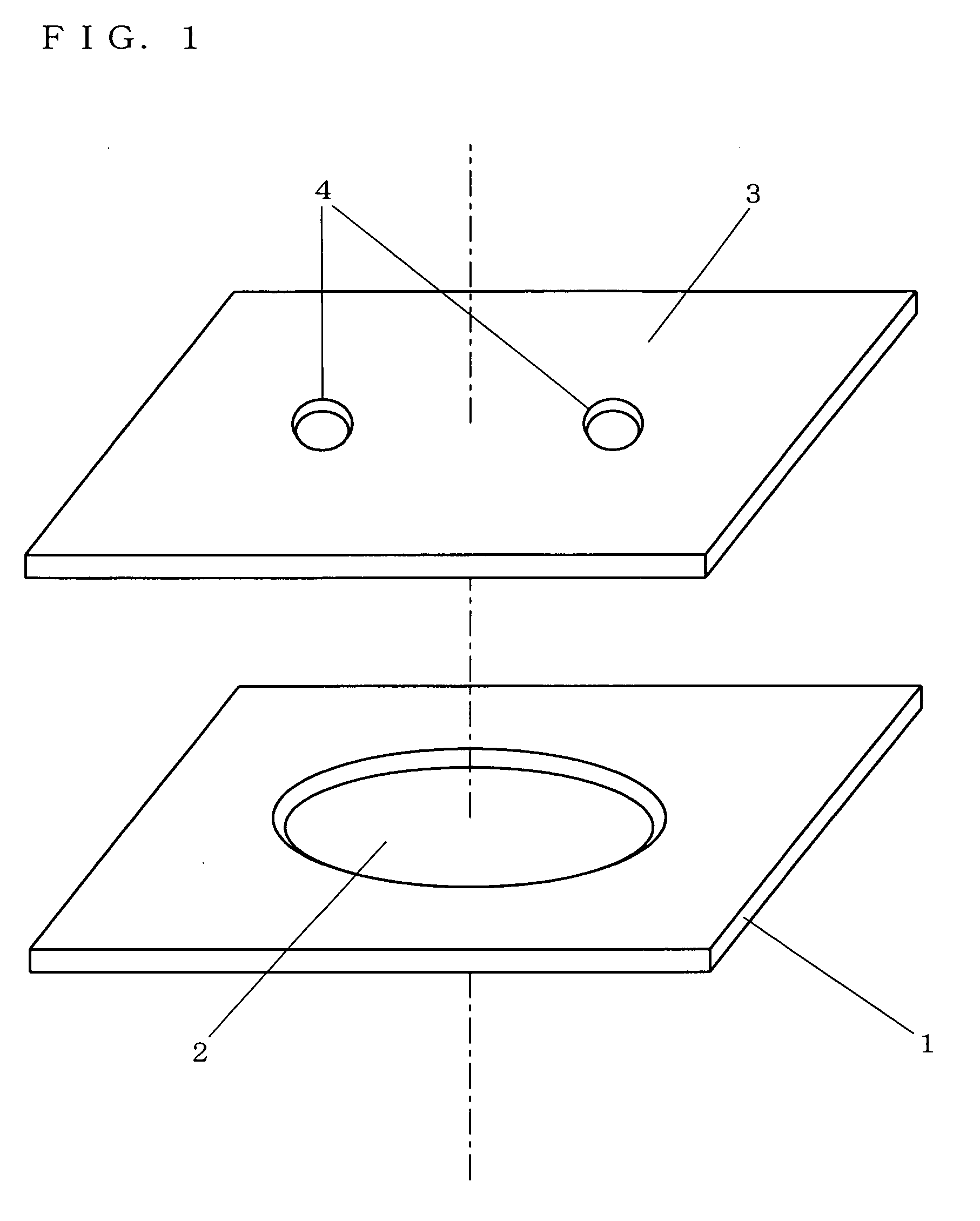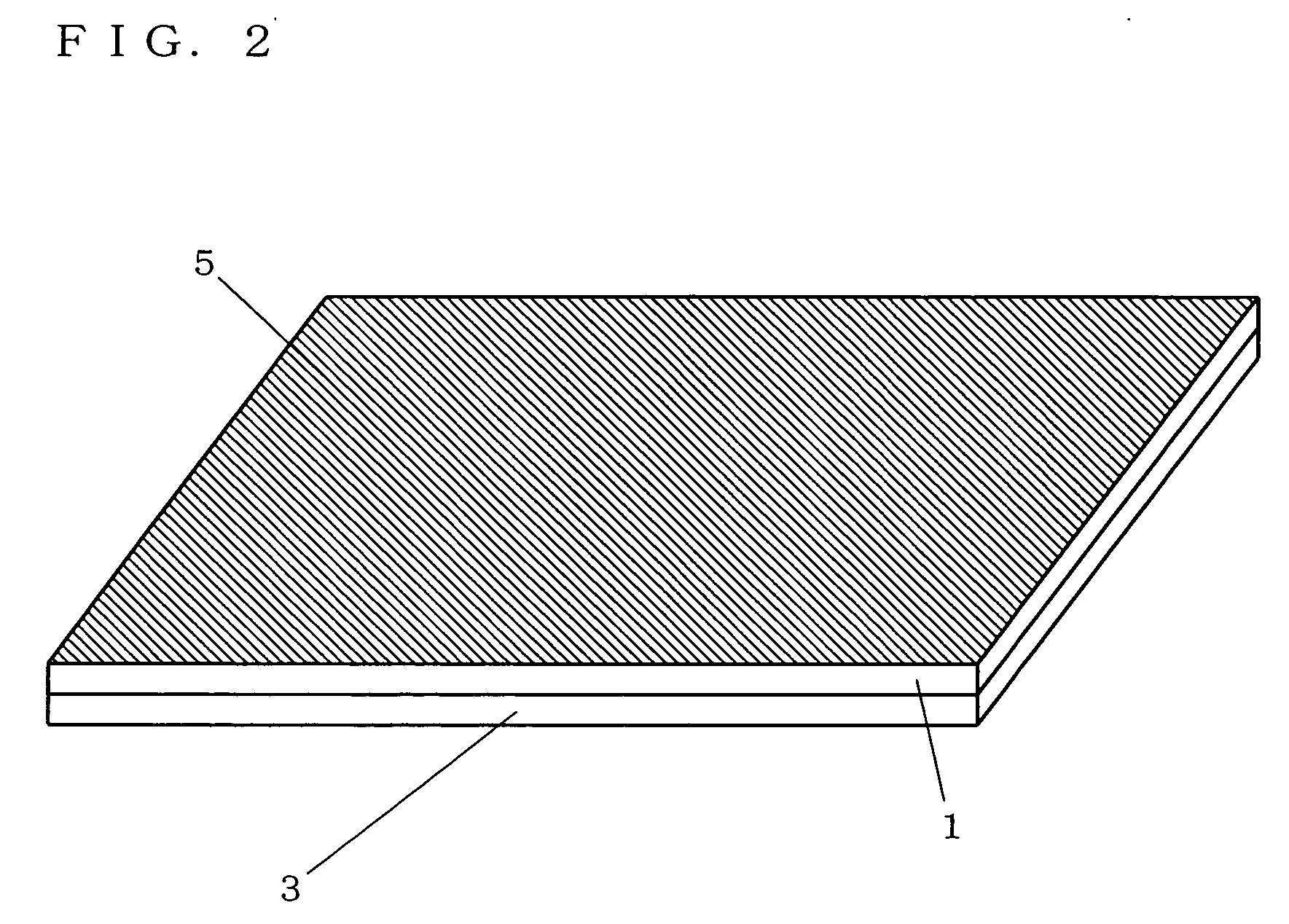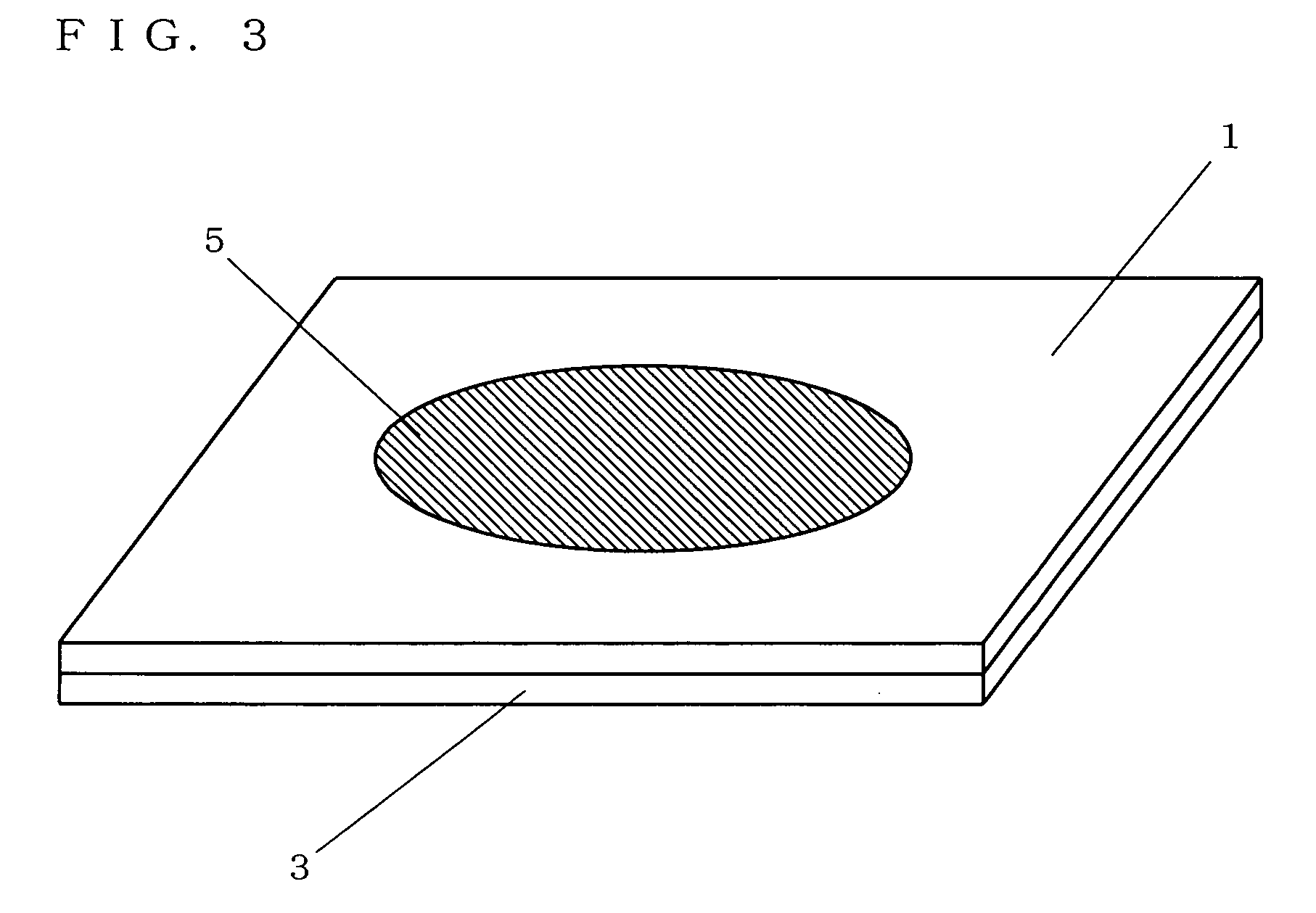Method of amplifying nucleic acid by electromagnetic induction heating and reaction container and reaction device to be used therein
a nucleic acid and electromagnetic induction heating technology, which is applied in the direction of bioreactor/fermenter specific use, organic chemistry, after-treatment of biomass, etc., can solve the problems of poor adhesion to the substrate, loss of electrical continuity, difficulty in heating, etc., and achieve the effect of rapid amplification of dna
- Summary
- Abstract
- Description
- Claims
- Application Information
AI Technical Summary
Benefits of technology
Problems solved by technology
Method used
Image
Examples
example)
(EXAMPLE)
(Example 1)
[0074] An example will be described below in which a polymerase chain reaction is performed as a nucleic acid amplification reaction, using the reaction container according to the embodiment of the present invention, as shown in FIGS. 1 and 2.
[0075] As a substrate 1, a silicon single crystal plate with a thickness of 500 μm was used and a reaction container for a polymerase chain reaction was fabricated.
[0076] First, a silicon single crystal plate with a thickness of 500 μm, the surface of which was subjected to a mirror finishing process, and a glass with a thickness of 400 μm were prepared. A cavity 2 of 6 mmø was provided in the silicon single crystal plate by dry etching using sulfur hexafluoride. The etching depth was 170 μm.
[0077] Then, two holes of 0.6 mmø, which served as sample injection holes 4, were provided by sandblasting in the glass which served as a cover plate 3.
[0078] Subsequently, the surfaces of the silicon single crystal plate and the gl...
example 2
(Example 2)
[0088] An example will be described below in which a polymerase chain reaction was performed as a nucleic acid amplification reaction, using a reaction container prepared in the same manner as that in example 1. As a comparative example, a 0.5 ml polypropylene tube was used as a reaction container.
[0089] In a polymerase chain reaction, a genome DNA solution which was extracted from human blood was used as a template. A DNA solution was prepared by extracting genome DNA from a subject's blood using Gen torukun™ (for blood) (manufactured by Takara Shuzo Co., Ltd.). As primers, GH20 (forward) primer (5′-GAAGAGCCAAGGACAGGTAC-3′) and GH21 (reverse) primer (5′-GGAAAATAGACCAATAGGCAG) of TaKaRa PCR control primer β-globin (human) Primer Set (manufactured by Takara Shuzo Co., Ltd.) were used and an experiment was conducted (for 408 bp amplification). After adding 0.5 μl of 2.5 U / μl TaKaRa Z-Taq®, 5 μl of 10×Z-Taq Buffer, 4 μl of a dNTP mixture (2.5 mM each), 2.25 μl of each 20 pm...
PUM
| Property | Measurement | Unit |
|---|---|---|
| temperature | aaaaa | aaaaa |
| volume | aaaaa | aaaaa |
| volume | aaaaa | aaaaa |
Abstract
Description
Claims
Application Information
 Login to View More
Login to View More - R&D
- Intellectual Property
- Life Sciences
- Materials
- Tech Scout
- Unparalleled Data Quality
- Higher Quality Content
- 60% Fewer Hallucinations
Browse by: Latest US Patents, China's latest patents, Technical Efficacy Thesaurus, Application Domain, Technology Topic, Popular Technical Reports.
© 2025 PatSnap. All rights reserved.Legal|Privacy policy|Modern Slavery Act Transparency Statement|Sitemap|About US| Contact US: help@patsnap.com



